Urban Exploration: The Allure of Abandoned Spaces and Their Mystique
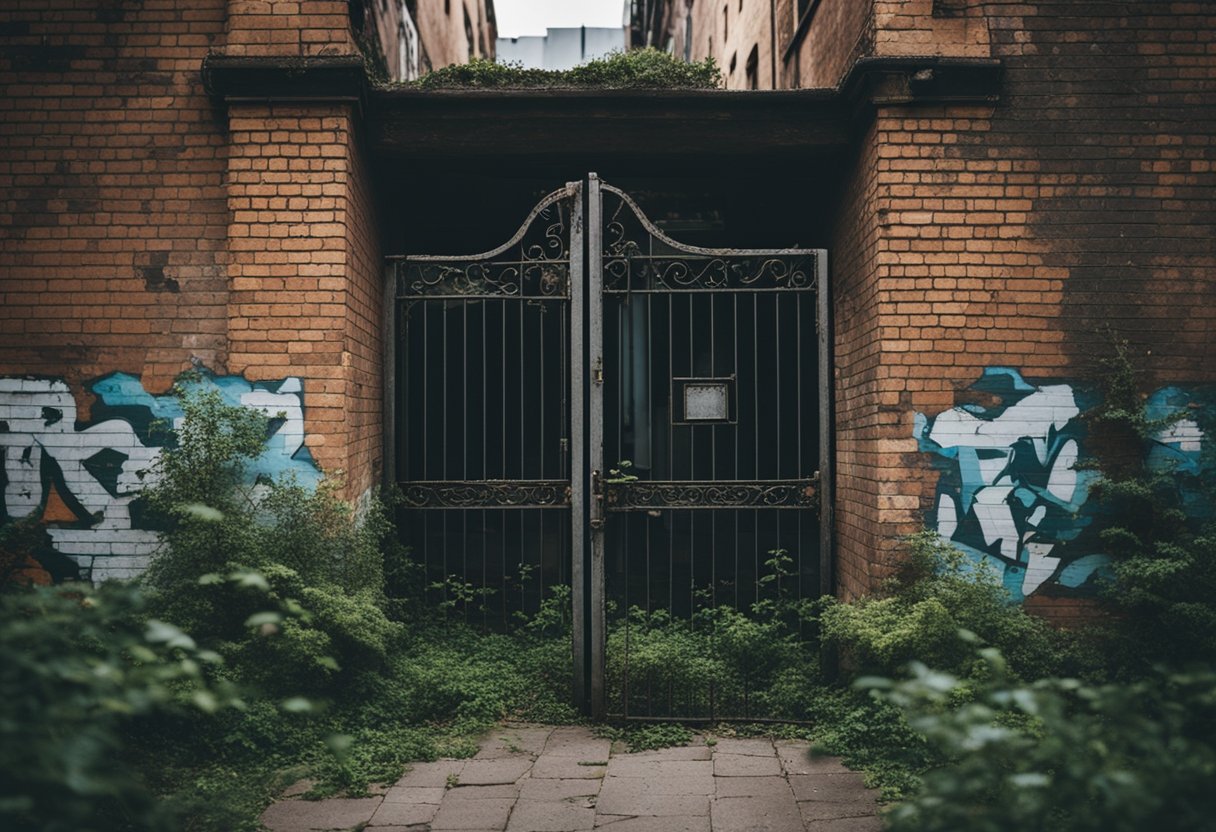
Updated On: April 15, 2024 by Eman Sameh
Urban exploration, often referred to as UE, captivates those fascinated by the untouched and decayed corners of urban landscapes. It’s an activity that draws individuals to abandoned spaces and forgotten places, driven by a blend of curiosity, nostalgia, and the thrill of discovery. As urban explorers, we find ourselves entranced by these neglected sites, each with a unique history etched into its crumbling walls. Despite the years of neglect, these spaces tell stories of times past, offering a tangible connection to an era that the modern world has left behind.
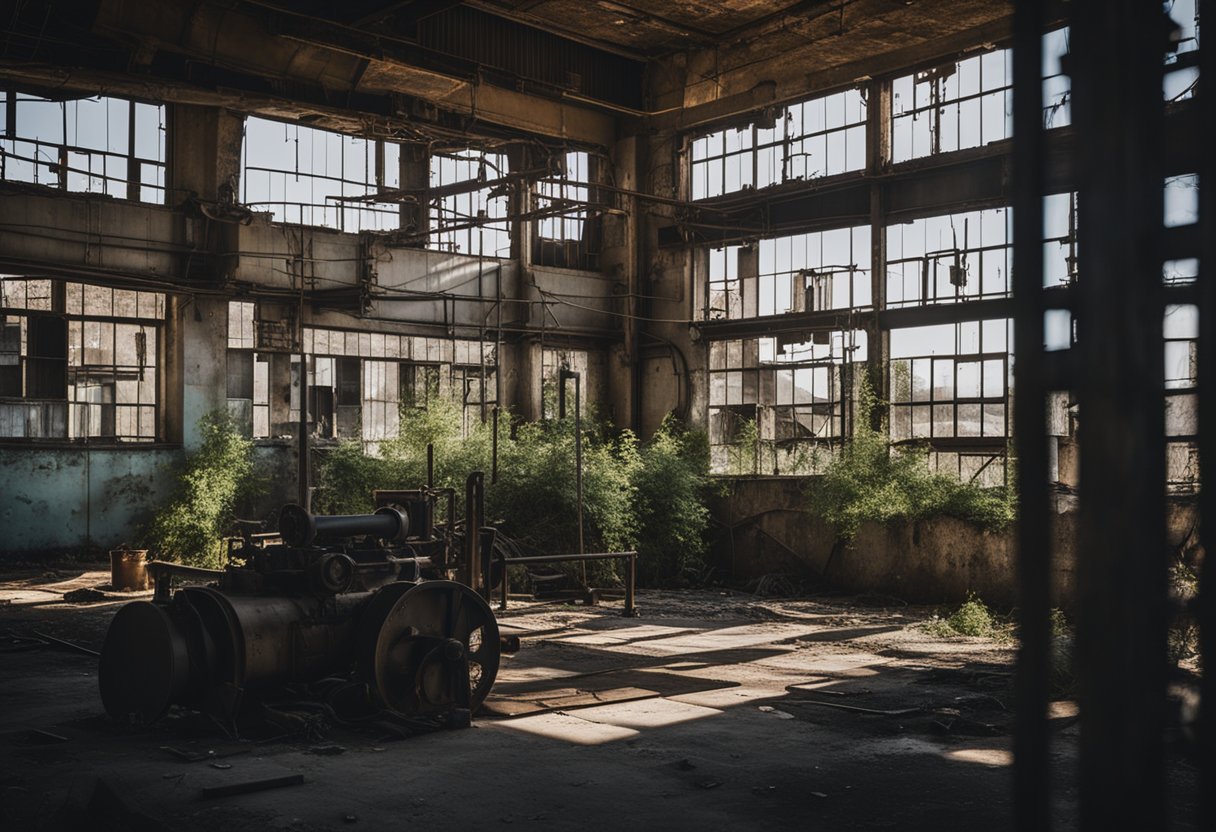
The popularity of urban exploration has burgeoned, as adventurous souls seek to uncover the histories and mysteries that lie within derelict structures. From defunct factories to forgotten asylums, each site holds a snapshot of history that urban explorers aim to preserve through photography, storytelling, and archival research. We navigate through these spaces with respect and a mindful approach to ensure that their stories continue to resonate. Our excursions are not just about the exploration itself; they foster a deeper appreciation for these hidden gems of the urban environment.
While our fascination with these spaces grows, we must also remain conscientious of the legal and safety implications that accompany urban exploration. We tread a delicate line between our passion for discovery and our respect for the law. Our community of urban explorers shares an unwavering respect for the places we visit, often advocating for the conservation of these historically significant sites. It is this balance of enthusiasm and responsibility that characterises the essence of urban exploration.
The Essence of Urban Exploration
Urban exploration taps into a deep-rooted curiosity to uncover the layers of history and decay that lie within abandoned spaces. These neglected structures stand as silent chronicles of the past, each wall and corridor echoing the memories of a time frozen in time.
We, as explorers, are drawn to the beauty found in the eerie stillness of forsaken places. Our adventure begins where the map ends, venturing into the obscurity to document and experience the forgotten spaces that mainstream tourism overlooks.
The allure of urban exploration lies not in the mere act of trespass, but in the unfolding narrative that each site reveals. Through our explorations:
- We connect with the history that shaped our urban landscapes.
- We witness the intricate dance between nature and the built environment, as flora and fauna reclaim their territory.
- We reflect on the transient nature of human endeavours, as today’s bustling hubs may be tomorrow’s relics.
These expeditions often involve navigating challenges that range from physical barriers to legal restrictions. Nevertheless, the intrigue of what lies beyond compels us to explore, to understand, and to keep the memory of these places alive.
In essence, urban exploration is a tribute to the past, a recognition of the present, and a conversation with the future. It beckons us to pause and appreciate the storytelling prowess of these derelict sites—each a piece of our collective history waiting to be acknowledged.
Understanding the Legal Landscape
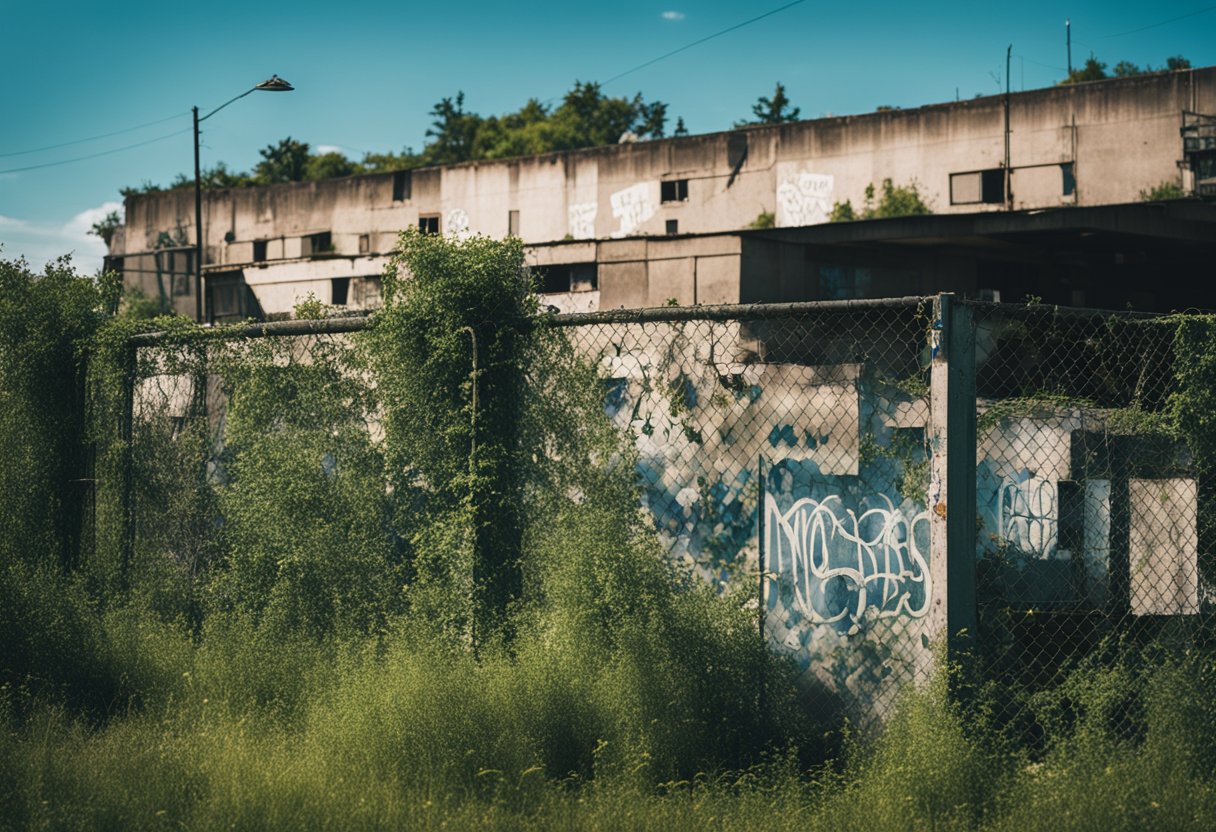
When we consider the practice of urban exploration, it’s crucial to confront the legal implications that accompany venturing into abandoned spaces. The law generally views these activities through the lens of trespassing, which can carry various penalties. It’s imperative to be cautiously informed about the local trespassing laws and to seek permission from property owners whenever possible.
- Legal Boundaries: Research local regulations intimately, as they can differ widely by region.
- Permission: Always seek explicit permission from property owners.
- Safety and Caution: Remember that legal restrictions also stem from genuine concerns for your safety. Many abandoned sites are not maintained, posing serious risks to physical well-being.
| Key Aspect | Considerations |
|---|---|
| Trespassing Laws | These can include fines or legal consequences. |
| Safety | Abandoned places may be structurally unsound or house hazardous materials. |
| Caution | Legal boundaries also serve to protect your safety in potentially dangerous environments. |
Our approach must be that of respect – not just for the law but for the sites we find alluring. This means acknowledging the danger inherent in decrepit structures and avoiding actions that could compound these risks. By doing so, our explorations can be both enriching and responsible.
The Risks and Rewards of Urbex
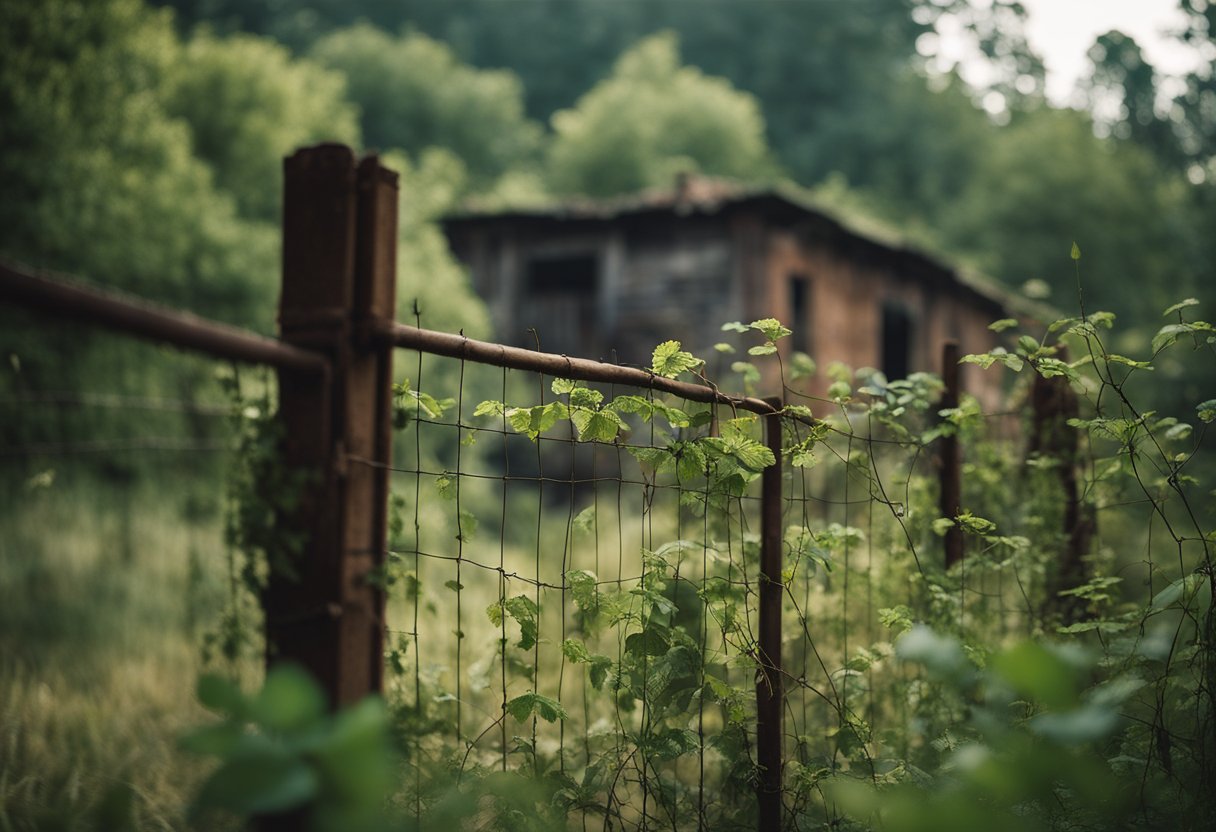
Urban exploration, or urbex, captivates with the lure of adventure and the profound nostalgia of forgotten places. It’s an activity where we, the urban explorers, search for abandoned and neglected spaces, from disused factories to former sanatoriums, driven by excitement and a desire to document these hidden facets of urban decay.
Risks of Urbex
The risks associated with urban exploration are tangible and multifaceted:
- Safety hazards: Derelict structures can harbour dangers such as weak flooring, exposed nails, and precarious debris.
- Legal consequences: Trespassing on private property is often illegal and could result in fines or arrest.
- Health risks: Abandoned sites might be contaminated with hazardous materials like asbestos or lead.
Promoting safety is paramount. We equip ourselves with protective gear and research locations thoroughly before venturing into unknown territories.
Rewards of Urbex
Conversely, the rewards make urbex compelling:
- Cultural insights: Each site tells a story, offering us a link to the past and a chronicle of urban change.
- Artistic inspiration: Photographers and artists find a wealth of subjects in the textures and patterns of decay.
- Community and camaraderie: Urbex enthusiasts form tight-knit communities bonded over shared exploits and discoveries.
In our pursuit of the hidden and the historic, we balance the danger inherent in these spaces with preparatory measures to ensure excitement doesn’t compromise safety. The allure of discovery drives us, alongside a commitment to respecting the sites we visit, evoking the past whilst leaving only footprints.
Photographic Journey Through Decay
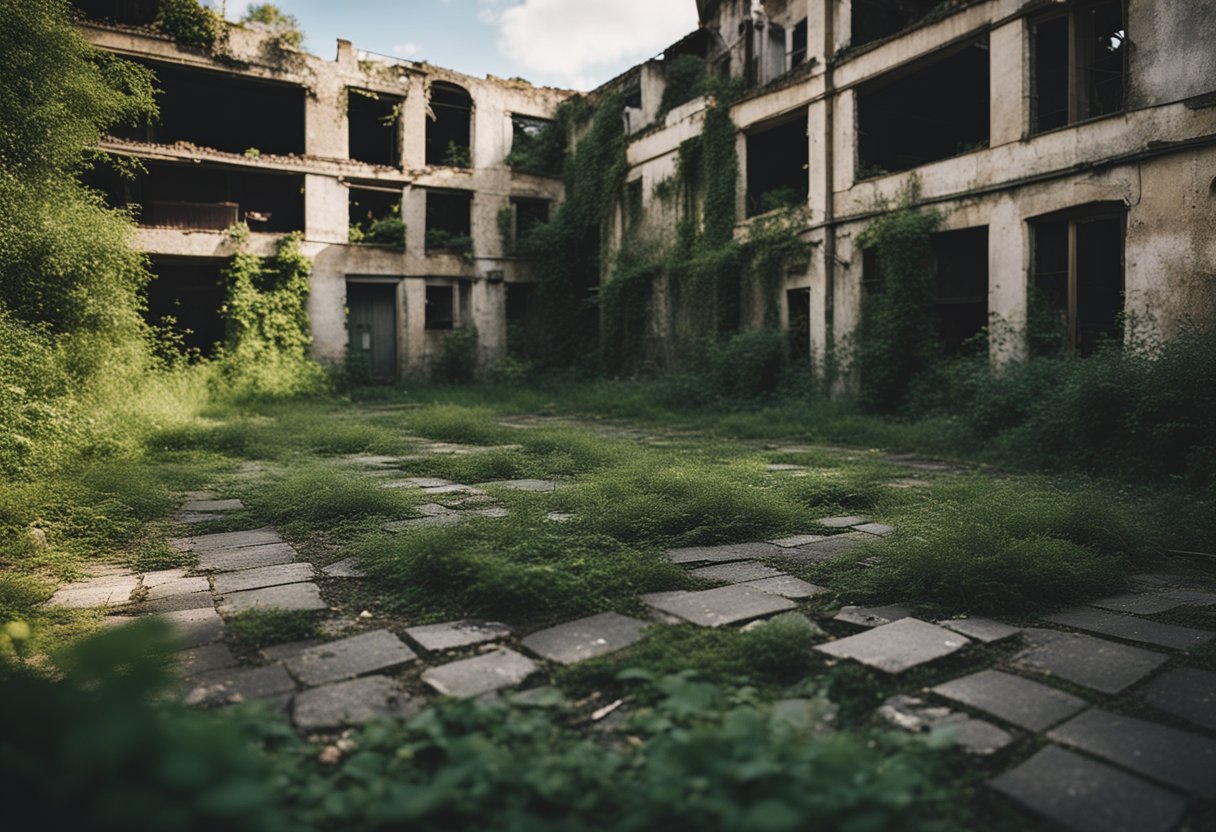
Venturing into the realm of abandoned places, we, as photographers, uncover a world where the passage of time and the absence of human activity have left a unique beauty imprinted on decaying structures. It’s a paradox where the degradation of these spaces only amplifies their aesthetic allure.
Capturing the Essence of Abandonment
- Abandoned Buildings: The silent halls of deserted hospitals and schools echo with storied pasts, their crumbling walls and peeling paint serving as the perfect subjects for our lens.
- Factories: Once teeming with productivity, now stand in quiet repose, their rusting machinery and expansive, empty spaces providing a stark contrast to their former busyness.
The Art of Exploration
- We tread carefully through these forgotten places, using our cameras to freeze moments in time.
- The interplay of light and shadow in these environments creates dramatic scenes, which we meticulously frame to draw out the essence of decay.
Beautifying the Forgotten
- Our photographs strive to convey the poignant beauty that resides within the decay, turning desolation into a form of art.
- Each image tells a story of what once was, challenging viewers to find beauty in the most unexpected places.
By documenting these spaces, we not only preserve their memory but also pay homage to the inevitable cycle of nature’s reclamation. Through our photographic journey, we give these abandoned spaces a new lease of life, asking those who observe our work to find the elegance hidden within the entropy.
The Historic Significance of Neglected Spaces
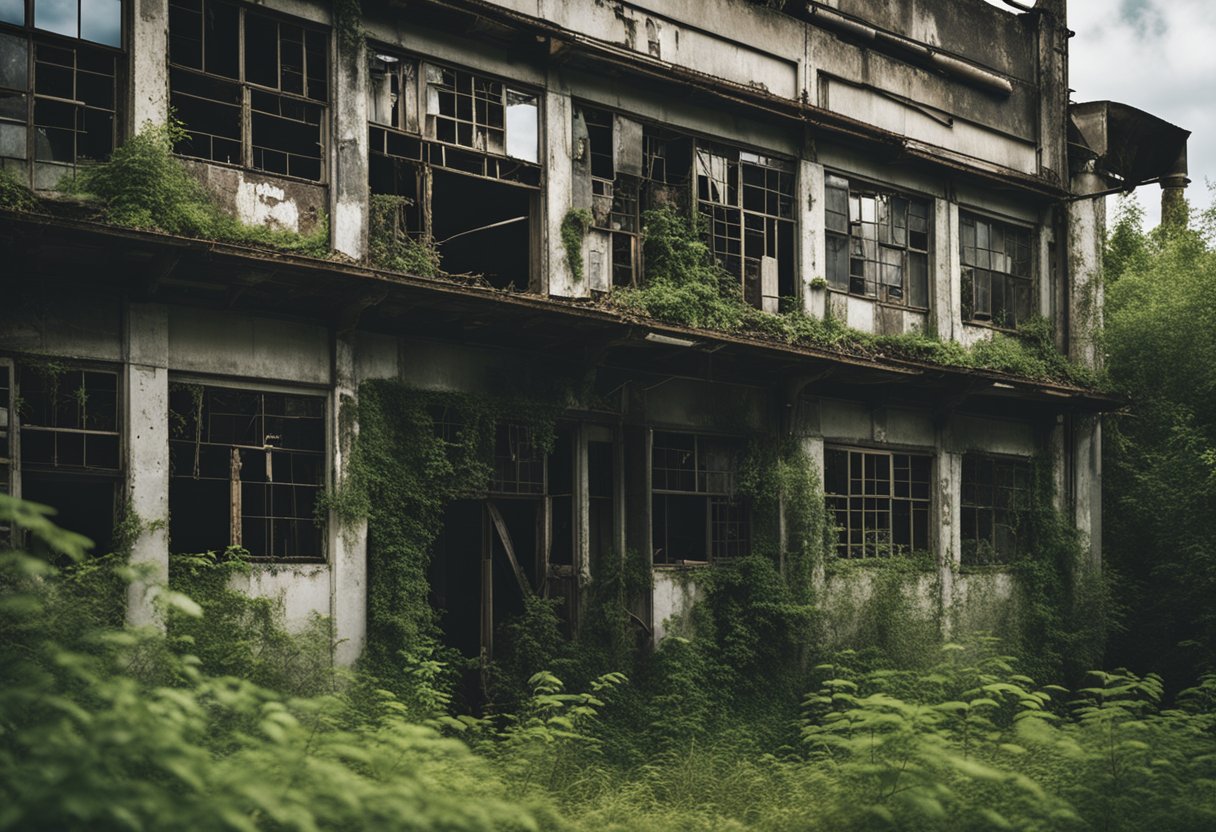
In our explorations, we often encounter decaying structures that stand as silent witnesses to the history of a bygone era. These neglected spaces, though bedecked in rust and peeling paint, are treasure troves of historical importance. They offer a unique heritage perspective that prompts us to consider the lives and times that have swept past their crumbling facades.
- Architectural Heritage: Many abandoned buildings showcase period-specific architectural styles, connecting us to architectural heritage. From the ironwork of Victorian factories to the Brutalist edges of mid-20th-century complexes, each structure has its own aesthetic and technological story to tell.
- Historic Importance: Through these silent halls and vacant lots, we can trace the societal changes, understanding industries that once thrived and communities that have since shifted, reminding us that our current era will also become a layer in the long tapestry of the past.
These spaces stir a sense of nostalgia, a yearning for information about previous inhabitants and their lives. It’s not just the physical space that becomes significant; it’s the stories, the unseen marks left by those who came before us that weave the full narrative of a place.
Our journey is about viewing these sites not as forgotten debris but as integral chapters in our collective history. By recognising the historic significance of these sites, we connect with a shared human experience that is both ubiquitous and profound. It’s a humbling reminder that existence stretches far beyond our present moments and spaces.
Urban Explorers’ Community and Culture
The urban exploration subculture is a thriving community that brings together individuals with a penchant for investigating abandoned and off-limits areas. In the spheres we frequent, the ethos of ‘take only pictures, leave only footprints’ resonates, underpinning our culture of respect and preservation.
Community Engagement and Knowledge Sharing:
- Forums and Online Groups: Platforms for urban explorers to exchange tips and experiences.
- Social Gatherings: Real-world meetups to cultivate camaraderie and shared learning.
Communities of urban explorers often comprise members from diverse backgrounds, linked by an intrinsic curiosity to discover the forgotten and overlooked. We embrace the eerie silence of a vacant hotel as much as the echoes of history in a disused industrial facility.
Ethics and Aesthetics:
- Respect for Property: A strict principle of non-vandalism.
- Photography and Documentation: Capturing the beauty of decay and preserving history through visuals.
As connoisseurs of the obscure, we find a unique allure in the silent stories told by derelict structures. Our pursuits, while driven by intrigue, always align with a deep-seated set of ethical standards.
Subculture Recognition:
- Public Discourse: Increasing awareness and understanding of our activities.
- Legal Considerations: Advocating for responsible exploration within legal bounds.
Urban exploration, or urbex, as we fondly term it, operates within a tight-knit support system that offers guidance to both novices and seasoned adventurers. As explorers, we navigate the fine line between thrill-seeking and responsibility, ensuring that we approach each site with the utmost regard for its narrative and integrity.
The Role of Abandoned Spaces in Urban Landscapes
Abandoned spaces, such as derelict factories and unused buildings, have a distinctive place in urban landscapes. These forgotten areas offer a glimpse into the past and provide a stark contrast to the bustling city life. We perceive these spaces as canvas for urban development, yet they are also a part of the community’s evolving identity.
Function and Potential: Abandoned sites serve as symbols of change within the urban environment. While some view them as eyesores, others recognise their potential for redevelopment or use as community spaces. There’s a delicate balance between conserving their historical value and transforming them for future use.
- Urban Exploration: This hobby offers an alternative perspective on these sites, appreciating their aesthetic of decay and their stories. Urban exploration is underlined by a respect for the site’s integrity, encouraging observation and documentation without causing harm.
- Community Engagement: These spaces can foster community engagement. With careful management, they can be repurposed for public use, such as parks or cultural centres, breathing new life into the locality.
- Ecological Impact: Nature often reclaims these areas, with plants and wildlife adapting to the new environment. This aspect of succession adds a unique ecological layer to the urban landscape.
Challenges: Abandoned structures can present issues such as safety hazards and attract illegal activities. Addressing these concerns is crucial for the welfare of the residents and the reshaping of the urban fabric.
In our cities, the role of abandoned spaces is multifaceted. They are not just memories of what once was but are integrally linked to the surrounding community and urban development. Their existence challenges us to be imaginative and considerate in how we shape our urban landscapes, ensuring that development is sympathetic to the past and beneficial for the future.
Conserving History Through Storytelling
In our exploration of past realms, we’re often compelled to unearth the untold stories of abandoned spaces and forgotten places. It is through narrative that the essence of these historical sites breathes anew, allowing us to partake in historical preservation by sharing experiences and knowledge.
- Narratives: We paint vivid pictures with words, resurrecting the echoes of history.
- Untold Stories: Each site conceals a mosaic of lives and events waiting to be revealed.
- Documentation: Meticulous records and research ensure that details are neither embellished nor lost.
- Historical Preservation: Through storytelling, we safeguard the memories, offering them longevity beyond physical decay.
- Stories: They bridge the gap between then and now, fostering a connection that time cannot erode.
The process of preservation is not merely a physical act but also one of memorialisation. As we weave the stories of yesteryears into today’s fabric, we etch them into the collective consciousness. Our narrative transforms spaces into chapters of a much larger book awaiting avid readers. This tapestry of past and present is enriched as we, the storytellers, commit to research and preservation.
By sharing these accounts, we ensure that the legacy of each site is honoured and becomes a part of our communal heritage. It is our responsibility, as custodians of history, to keep the flame of the past alight for generations to come.
From Industrial Ruins to Artistic Canvases
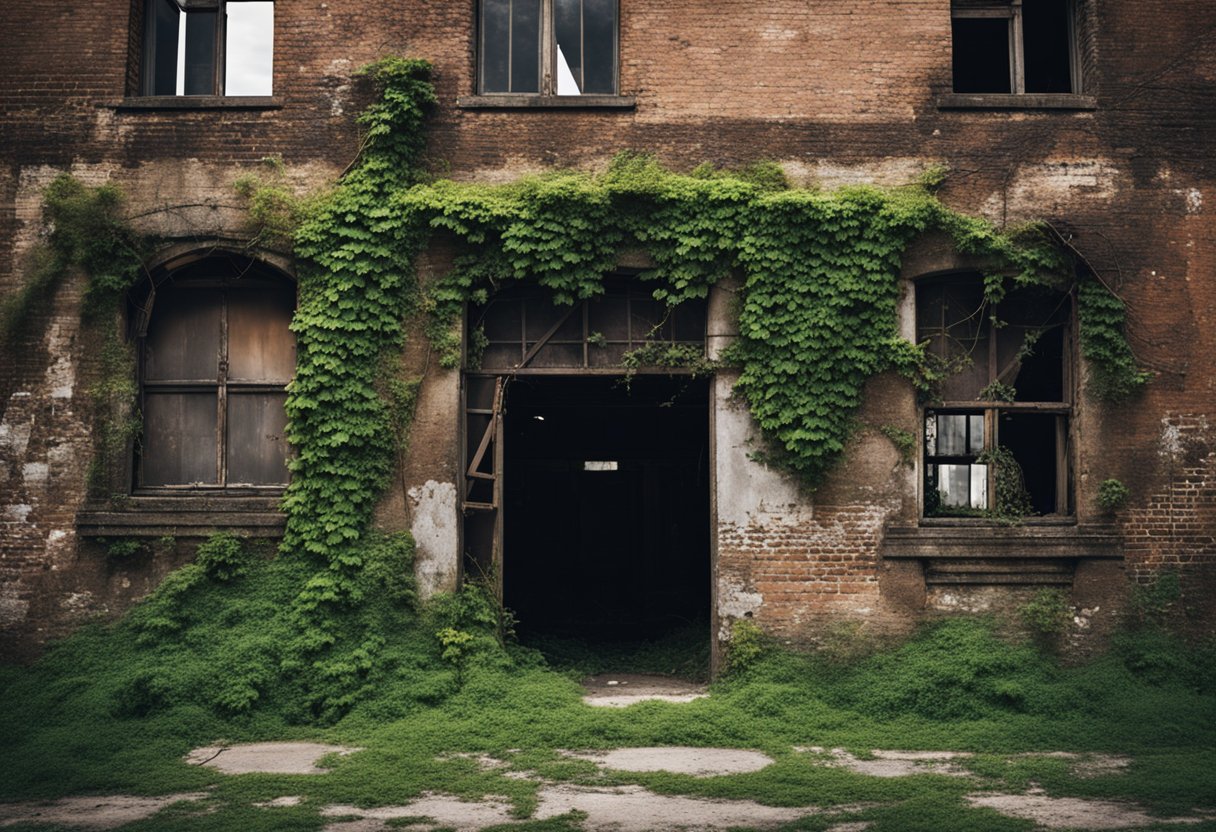
Abandoned factories and buildings offer a unique backdrop to the creative minds in urban landscapes. These vast, empty spaces provide a blank canvas where artistic expression can flourish among ruins that once pulsed with industrial life. We witness the transformation of decay into beauty, as these forgotten places become the studios of graffiti artists and photographers alike.
Transforming Abandoned Factories
- Visual Art: Street artists often embrace the rough surfaces of factory walls, creating vibrant murals that breathe new life into derelict structures.
- Photography: The contrast between decay and artistic intervention makes these locations popular subjects, turning decayed structures into stunning visual stories.
Repurposing Spaces
- Installations: Abandoned buildings serve as the setting for temporary installations, creating interactive spaces that engage viewers with their environment.
- Galleries: Some spaces evolve to host art exhibitions, where the industrial aesthetic adds a raw edge to the displayed works.
The Allure of Decay
We find beauty in the juxtaposition of past and present. The historical narrative of these spaces, coupled with fresh artistic visions, creates a multilayered experience. The often-overlooked corners of our urban environment become a testament to the resilience of beauty and expression.
Safety and Respect
In our endeavours, we ensure to approach these sites with the utmost respect. By capturing their essence without causing further damage, we aim to preserve their integrity for future inspiration.
Through our eyes, we transform forgotten realms into vibrant scenes of creativity, ensuring a harmonious balance between exploration and preservation.
The Allure of Abandoned Spaces Worldwide
In every corner of the globe, we find the mystique of abandoned spaces irresistible. They whisper tales of times past and invite us to witness the beauty in decay and the narratives left behind.
The Lost Villas of Italy
In Italy, we are captivated by the neglected grandeur of villa complexes that dot the countryside. The aristocratic homes, forsaken and overgrown, seem frozen in time, their frescoed walls and classical statues exuding an air of timeless nostalgia.
Ireland’s Monuments of Yesteryear
Ireland’s landscapes are strewn with the ruins of ancient castles and monastic sites. Our exploration here, mentioned by the likes of Connolly Cove, delves into the emerald isle’s deep connection with its past, where every stone tells a story of a bygone era.
Forgotten German Industrial Might
In Germany, colossal factories that once fuelled an empire lie abandoned. These former bastions of industrial prowess now serve as a stark reminder of forgotten structures and the relentless march of time.
French Theatre: Drama in Decay
France offers us a hidden spectacle where theatres, once echoing with applause, now rest in silence. Elegantly decaying, these cultural temples continue to exude dramatic flair amidst peeling paint and forgotten props.
The Echos of History in Berlin’s Architecture
Berlin’s eclectic architecture leads us through a Pandora’s box of abandoned spaces. From wartime bunkers to disused ships, our journey through Berlin’s urban landscape uncovers layers of history still etched into the city’s architectural heritage.
Conclusion: Looking Forward by Peering Backwards

In our engagements with the world’s forgotten locales, we continually find that peering into the past is more than a nostalgic jaunt; it’s a meaningful journey that informs our understanding of memory and reflection. Urban explorers venture into the silent echoes of deserted spaces, revealing hidden gems that the past tenderly lingers upon, as a silent testament to what once was.
We see these explorations as a unique form of heritage interaction—one that combines the thrill of discovery with a deeper contemplation of history and progress. It’s not merely about the lure of the unknown but discovering the intricate tapestries of stories woven into the very fabric of our cities.
- Memory: In every forsaken structure and abandoned street, there is a memory etched into the walls—a collage of the lives that brushed against them.
- Reflection: By reflecting on these remnants, we capture a snapshot of progress, observing how far we’ve travelled as a society.
- Progress: The very act of charting these lost territories signifies an inherent desire to understand and document our collective evolution.
Through our shared experiences, we are reminded that the allure of urban exploration isn’t solely in the decay but the undeniable human impulse to connect with our heritage. As urban explorers, we look forward to a future built upon the robust foundations of our past, continually driven to unearth the chronicles that lie asleep, waiting for us to uncover and celebrate them.
Frequently Asked Questions
Before embarking on the adventure of urban exploration, it’s crucial to understand the logistics and ethics involved. We’ve compiled answers to some of the most common questions to help you navigate through the excitement and challenges of exploring abandoned spaces.
What are the legal implications of urban exploration in the UK?
In the UK, urban exploration can lead to legal consequences if explorers enter properties without permission, as this constitutes trespassing—a civil offence that becomes criminal if there’s intent to damage, steal, or be disruptive.
How can photographers legally capture images of derelict structures without trespassing?
Photographers should seek permission from property owners to access and photograph derelict structures legally. Capturing images from public viewpoints is also a lawful alternative, provided no invasion of privacy occurs.
Which safety precautions should be taken when exploring abandoned sites?
When visiting abandoned sites, it’s paramount to wear protective clothing, inform someone of your plans, carry a fully charged phone, and never explore alone. Awareness of hazards such as unstable structures and hazardous substances is also essential for safety.
What essential gear is recommended for urban explorers starting out?
New urban explorers should equip themselves with high-quality torches, sturdy boots, gloves, a first aid kit, and a camera for documenting. Additionally, a back-up power source and maps can be invaluable during explorations.
Can urban exploration have a positive impact on preservation and awareness of historical sites?
Urban exploration can highlight the historical significance and potential for restoration of neglected sites, thus sparking interest in preservation. By documenting and sharing their findings, explorers often raise awareness and can contribute to protecting history.
What are the ethical considerations one should bear in mind while engaging in urban exploration?
Ethical urban explorers should avoid causing damage, remove nothing from the site, maintain discretion regarding location sharing to prevent vandalism, and respect any requests for privacy or sensitive treatment regarding what they document.






